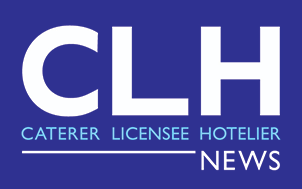Cash Flow Pressures Drives Over 100% Rise in Insolvencies

Insolvency figures released for April 2022* by the Government’s Insolvency Service showed corporate insolvencies more than doubled compared to the same month last year (1,991 in April 2022 and 925 in April 2021). They were 34% higher than the number registered three years previously (pre-pandemic; 1,429 in April 2019)
In April 2022 there were 1,777 Creditors’ Voluntary Liquidations (CVLs), more than double the number in April 2021 and 74% higher than April 2019.
Numbers for other types of company insolvencies, such as compulsory liquidations, remained lower than before the pandemic, although there were three times as many compulsory liquidations in April 2022 compared to April 2021, and the number of administrations was 51% higher than a year ago.
Challenging times ahead as cash flow pressure on businesses grows and even better performing businesses won’t be immune
Restructuring and insolvency professional, Oliver Collinge from PKF GM said:
“The large rise in corporate insolvency numbers is not surprising compared to this time last year. However it is alarming that there is also a material increase on pre-pandemic levels. Many distressed businesses have managed to keep afloat by making use of the high level of government support available. However, as businesses have now started to repay BBLS and CBILS loans as well as deferred HMRC liabilities, pressure on cash is growing and we expect to see heightened levels of business failures for some time to come.
Rising inflation, volatility due to the ongoing conflict in Ukraine, staff shortages, increasing energy prices, supply chain woes and the need to repay Covid incurred debt, are all likely to lead to high numbers of insolvencies during the rest of 2022. This is even causing challenges for the better performing businesses, not least the cost of living crisis, which has led to the biggest squeeze on real wages since records began.
Oliver Collinge added: “Whilst the Covid loans, support packages and interventions staved off many business closures, their removal is now exposing businesses already under severe cash flow and working capital pressures. It’s critical businesses act early and seek advice if they are struggling now, or think cash flow may be squeezed in coming months. The earlier they act, the more options they’ll have to secure the long-term survival of the business.
“The biggest increase is in Creditors’ Voluntary Liquidations (CVLs), where directors have chosen to place their business into an insolvency process. In part this may be because creditors can now take enforcement action, forcing directors to take pre-emptive action. There is also significant anecdotal evidence that many of these liquidations involve small companies which had taken out Bounce Back Loans and are now unable to repay them.”
Last chance to access Recovery Loan Scheme
Businesses recovering from the impact of Covid and seeking to improve their cash position may wish to consider applying to the Recovery Loan Scheme (RLS) before this is closed on 30 June.
This offers businesses loans of up to £2m of which 70% is underwritten by government guarantee. It is available to businesses that have been affected by Covid and whose turnover is less than £45m. The finance may be used for any legitimate purpose, including cash flow, investment and growth, but they must be able to afford the additional debt finance required.
A message to company directors
Oliver Collinge added: “There are plenty of proactive things you can do now to build resilience into your business for the post-Covid economy; don’t leave it too late. Having a restructuring professional guide you through the process can be invaluable in getting the best outcome and will also help you understand and mitigate your risk as a director.”
“For those businesses that are struggling, now may be the time to begin negotiations with landlords and creditors to develop manageable repayment plans. Will revenues be high enough to support your cost base? Will cash flows be sufficient to deal with the additional debt burden (both formal and informal) that has accrued during Covid? Perhaps a CVA is something which should be considered or, where you may need to take the difficult decision to make redundancies to survive, consider applying for government funding to meet the short term cash impact of this.”
